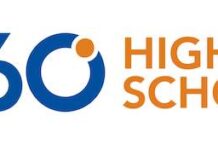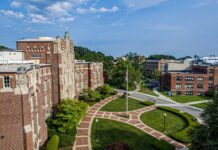
Charter schools are a chance to involve entire communities. Highlander Charter School takes that notion and runs with it. Other area public schools are, in fact, looking to them as a model.
At the forefront of their innovation is touch technology, extensive after-school programs, a unique approach to math and science learning, along with a commitment to community service and family engagement.
They have seen significant gains in student proficiency and parent satisfaction. Like other urban schools, Highlander has struggled to overcome low standardized test scores. Yet over the past three years, student aptitude levels have increased by 17 percentage points on the literacy New England Common Assessment Program and 15 percentage points on the math NECAP.
They are also showing steady progress towards closing the gap not only with science but literacy and math. Still, these are not their only measures of success.
It’s a “nurturing the whole child” approach that has garnered the school recognition, as well as the R.I. Department of Education, which granted Highlander $140,000 to share its best practices.
“Every single teacher goes to every single one of their students’ houses to meet with families to create common understanding for the year’s expectations,” said Rose Mary Grant, head of school.
Teachers are drawn to the Providence school for its creativity within the curriculum, small class sizes of only 16-18 students, and the extra support. The instructor turnover rate is low. In the past two years, only a few teachers have left due to relocation.
“Flexibility in a charter school allows teachers to explore their passions and their students’ passions,” said Grant.
“We are able to test innovative ideas across different backgrounds,” said Grant.
This is due to the fact that not all students come from a concentrated area like Providence. Highlander is able to draw upon somewhat of a diverse socio-economic background stretching across the state.
Each year, the admission lottery gets more competitive. In March, 46 spots were filled for 890 applicants.
Confident in its recent test scores in literacy, due in part to their work with The RI Literacy Partnership, the school has chosen to focus on advanced ways of teaching math and science.
Smart Math, a program designed by its teachers, allows repetition across grade levels to ensure mastery. It is not a “canned” product. The Smart Math curriculum is electronic.
Using a mostly electronic curriculum in math, teachers are able to easily adjust the lesson to compensate for skill sets, explains Grant.
A multisensory approach to learning has recently developed further with a touch-technology integration into classrooms using iPad applications. They are used to improve skills such as reading and at the same time enticing students into learning.
Teachers at Highlander have created student-assessment software to make it easier and faster for teachers to enter evaluation data, resulting in an automated analysis of skill levels and challenges.
This allows a teacher to immediately adjust lesson plans according to a student’s ability. •












